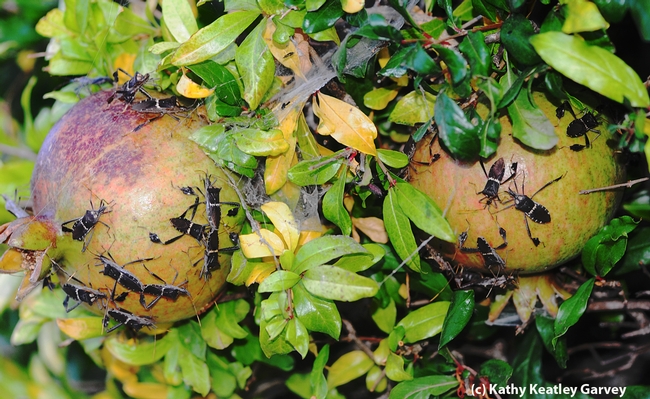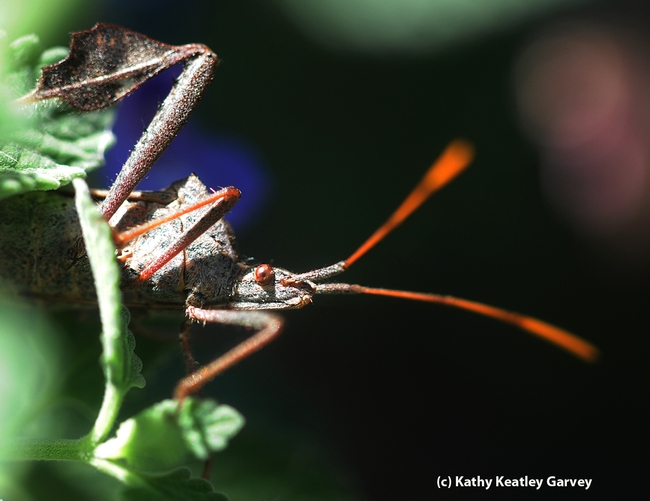When you first see the leaffooted bug, you know immediately how it got its name.
The appendages on its feet look like leaves!
This morning we saw one in our catmint (Nepeta) patch. It crawled beneath the tiny leaves, sharing space with honey bees, European wool carder bees, butterflies and assorted spiders.
Tonight scores of them stormed our pomegranate tree. In fact, they made the immature fruit their kitchen, living room and bedroom.
Although the leaffooted bug (Leptoglossus clypealis) is a pest of pistachios and almonds, we've never seen it on our pomegranate tree until today. Our tree, planted in 1927--back when Herbert Hoover was the U.S. president--has few pests. One year white flies attacked it mercilessly. Tonight leaffooted bugs claimed squatters' rights.
The adult bug is about an inch long with a white or yellow zigzag across its back. Shades of Zorro! Its most distinctive feature, however, are the leaflike appendages on its feet.
Back in 2009, integrated pest management specialist Frank Zalom, professor of entomology at the University of California, Davis, co-authored UC IPM Pest Management Guidelines on the leaffooted bug as it pertains to almonds. Zalom and his colleagues called attention to their needlelike mouthparts. The adults feed on young nuts "before the shell hardens." And after the nut is developed, "leaffooted bug feeding can still cause black spots on the kernel or wrinkled, misshapen nutmeats."
As for our pomegranate tree, we're not sure how well these leaffooted bugs can probe the tough, leathery fruit.
We open the pomegranates with a serrated knife...
Attached Images:


